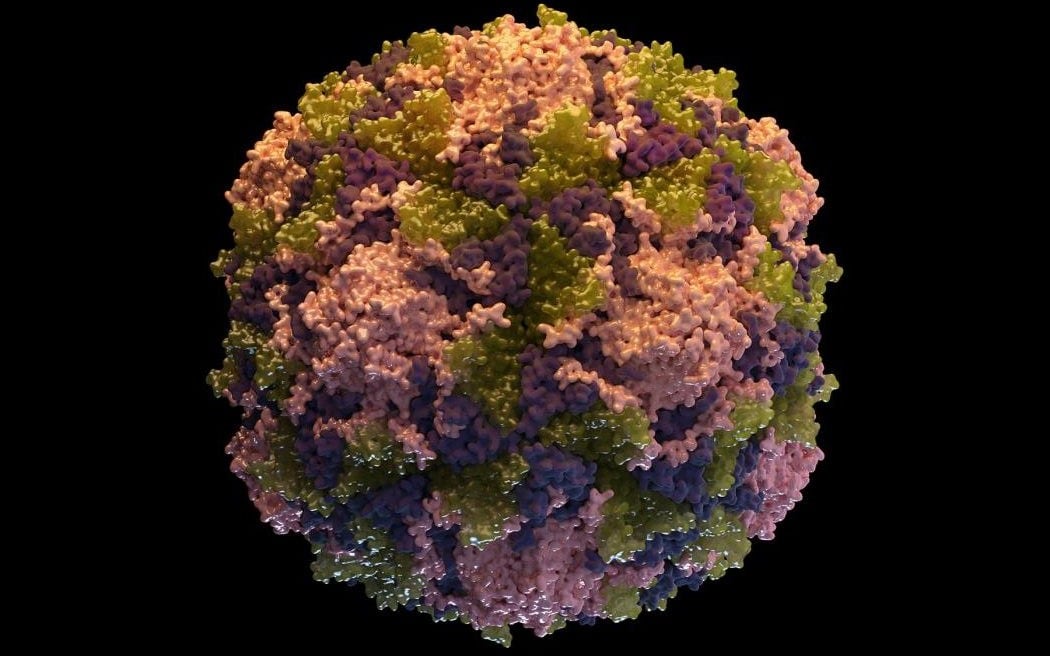Key points
- Vaccination has helped eliminate wild poliovirus in the United States.
- Maintaining high immunity (protection) against polio through vaccination is the best way to continue keeping people safe from polio.
- The polio vaccine is safe and effective.

What it is
Polio was once one of the most feared diseases in the United States. Thanks to the polio vaccine, wild poliovirus has been eliminated in this country.
The best way to keep people safe is through vaccination. This maintains a high level of protection (also called immunity) in the population.
Signs and symptoms
Most people who get infected with poliovirus will not have any visible symptoms.
About 1 out of 4 people with poliovirus infection will have flu-like symptoms that can include:
- Sore throat
- Fever
- Tiredness
- Nausea
- Headache
- Stomach pain
These symptoms usually last 2 to 5 days, then go away on their own.
Serious symptoms
A smaller proportion of people with poliovirus infection will develop more serious symptoms that affect the brain and spinal cord:
- Meningitis (infection of the covering of the spinal cord and/or brain)—occurs in about 1 to 5 out of 100 people with poliovirus infection, depending on virus type.
- Paralysis (can't move parts of the body) or weakness in the arms, legs, or both—occurs in about 1 out of 200 people to 1 in 2000 people, depending on virus type.
Paralysis is the most severe symptom associated with poliovirus because it can lead to permanent disability and death. Between 2 to 10 out of 100 people who have paralysis from poliovirus infection die, because the virus affects the muscles that help them breathe
Call your doctor immediately if:
Post-polio syndrome
Post-polio syndrome (PPS) is a condition that can affect polio survivors decades after they recover from their initial poliovirus infection. Unlike poliovirus, PPS is not contagious.
PPS affects between 25 and 40 out of every 100 polio survivors. Starting about 15 to 40 years after the initial infection, people affected by PPS can begin experiencing a set of health problems such as:
- Muscle weakness
- Feeling tired (mental and physical fatigue)
- Joint pain
Some people with PPS have only minor symptoms, while others develop more visible muscle weakness and atrophy (a decrease in muscle size). PPS is rarely life-threatening, but the symptoms can make it difficult for an affected person to function independently.
Who is at risk
Anyone who is not up to date with their polio vaccines is at risk of getting polio.
Polio has been eliminated from most of the world, but the disease still occurs in other parts of the world. It only takes one person with polio traveling from another country to bring polio into the United States.
How it spreads
You can spread the virus for days!
Poliovirus is very contagious. Poliovirus only infects people, entering the body through the mouth. It lives in an infected person's throat and intestines and spreads through person-to-person contact. It can also contaminate food and water in unsanitary conditions.
You can get polio from:
- Contact with the feces (poop) of an infected person
- Droplets from a sneeze or cough of an infected person (less common)
For example, you can get polio if you:
- Eat raw or undercooked food or drink water or other drinks that are contaminated with the feces of an infected person.
- Put a contaminated object such as a toy in your mouth.
- Touch a contaminated object and put your fingers in your mouth.
- Have close contact with a person sick with polio, for example when caring for them.
Prevention
Protect your child with vaccination. Polio vaccine protects children by preparing their bodies to fight the poliovirus. For best protection, children should get 4 doses of inactivated polio vaccine (IPV). Almost all children (more than 99%) who get all the recommended doses of the inactivated polio vaccine will be protected.
If you know or suspect that you are unvaccinated or incompletely vaccinated, you should receive polio vaccination. Talk to your healthcare provider if you have any concerns about polio or your vaccination status. Your provider can help you understand your options.
In addition to protecting yourself with the vaccine, practice good hand hygiene. Wash hands often with soap and water. Note that alcohol-based hand sanitizers do not kill poliovirus.
Testing and diagnosis
Diagnostic testing can detect poliovirus in specimens from the throat, feces (stool), and occasionally cerebrospinal fluid (CSF). Testing works by isolating the virus in cell culture or by detecting the virus by polymerase chain reaction (PCR).
Treatment and recovery
There is no cure for paralytic polio and no specific treatment.
Physical or occupational therapy can help with arm or leg weakness caused by polio. Therapy might also improve long-term outcomes, especially if implemented early in the course of illness.
Healthcare providers should consider consulting neurology and infectious disease experts to:
- Discuss possible treatments.
- Recommend certain interventions on a case-by-case basis.
